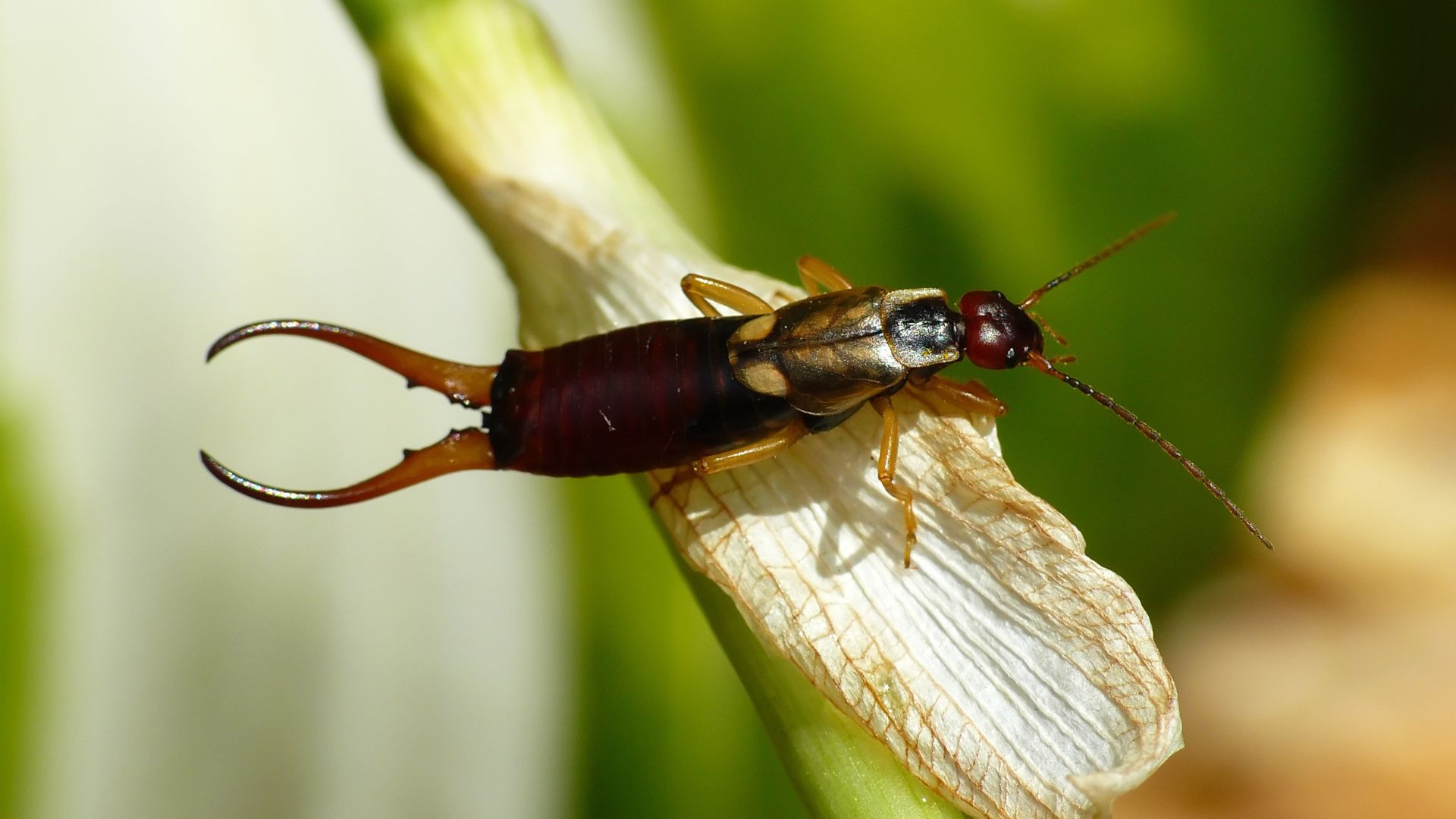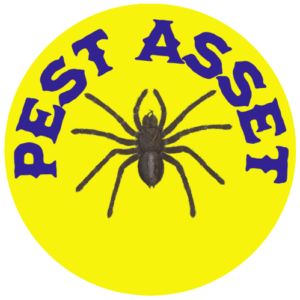
Earwigs in Ohio: Creepy Crawlies or Chill Cohabitants?
Table of Contents
Ever see a strange, pincer-wielding insect scurrying across your basement floor and recoil in horror? You’re not alone. Earwigs in Ohio are a common sight in homes, and their appearance can be unsettling. But are they really the villainous pests they seem to be?
In this article, we’ll shed light on the fascinating world of earwigs. We’ll explore their habits, debunk some common myths, and answer all your burning questions: are earwigs harmful? Should you be scared? And most importantly, how to keep them out of your house!

Earwigs: More Myth Than Menace
Let’s start with the good news: earwigs pose no real threat to humans. Despite their intimidating pincers, they don’t bite or sting, nor do they carry any diseases. While they might not win any beauty contests, they’re more of a nuisance than a danger.
So, why are earwigs invading your Ohio home? These moisture-loving insects seek shelter during dry spells or cold snaps. They’re particularly drawn to basements, bathrooms, and laundry rooms due to the higher humidity levels. Cracks, gaps around pipes, and pet doors become their expressway into your home.
Should you declare war on earwigs? Not necessarily. While their presence might be unsettling, they’re generally harmless. In fact, outdoors, earwigs play a valuable role. They act as nature’s decomposers, breaking down decaying plant matter and helping maintain a healthy ecosystem. They even help control populations of other small insects like aphids and mites!
Earwigs in Ohio: Friend or Foe?
Now, let’s address some common earwig misconceptions:
- Do earwigs lay eggs in your house? It’s possible, but not super likely. They prefer damp environments for egg-laying. However, if they find a suitable spot indoors, they might lay a small clutch.
- Can earwigs live in your bed? Highly unlikely! Beds are typically too dry and warm for earwigs. They prefer cool, damp spaces.
- Will earwigs crawl on you at night? It’s not their usual move. Earwigs are primarily nocturnal, but they’re not aggressive. They’d rather avoid contact with humans altogether.
- Are earwigs worse than roaches? Definitely not! Roaches can carry diseases and contaminate food, while earwigs are mostly just a nuisance.

Keeping Earwigs Out: Prevention is Key
Now that we’ve debunked some myths, let’s explore how to keep earwigs at bay:
- Seal up the cracks! Inspect your foundation, windows, and doors for any openings. Seal these entry points with caulk or weather stripping to deter uninvited guests.
- Address moisture issues. Leaky pipes, clogged gutters, and overflowing basements create an earwig paradise. Fix any leaks and address high humidity levels in your basement or crawl space.
- Tame the wild around your home. Earwigs are attracted to decaying organic matter. Keep your gutters clean, rake leaves away from your foundation, and avoid leaving piles of yard waste near your house.
The Earwig Lifecycle: From Egg to Adult
Earwigs have a fascinating lifecycle that can help us understand their behavior and potential impact on our homes. Here’s a breakdown of the key stages:
- Eggs: Female earwigs lay clutches of 20-50 eggs in moist environments. They’re very protective mothers, tending to their eggs and young nymphs until they hatch.
- Nymphs: The newly hatched nymphs resemble tiny, wingless adults. They go through several molting stages as they grow and develop.
- Adults: Mature earwigs have distinctive pincers and two pairs of wings, although they rarely fly. They’re typically nocturnal and spend their days hiding in damp crevices.

Understanding this lifecycle can help us target specific stages for control. For example, focusing on eliminating moisture sources can deter egg-laying females and reduce future infestations.
Beyond Prevention: What if Earwigs Take Over?
Sometimes, despite our best efforts, earwigs can become a significant nuisance. If you’re dealing with a major infestation, here are some additional steps you can take:
- Insecticides: There are various insecticides available that can be effective against earwigs. However, it’s important to choose a product labeled for earwig control and follow the instructions carefully. Prioritize eco-friendly options whenever possible to minimize harm to beneficial insects and the environment.
- Traps: Sticky traps or bait traps specifically designed for earwigs can be used to capture and eliminate them. Place them in areas where you’ve seen earwig activity.
- Professional Help: If earwig infestations become overwhelming or you suspect a moisture problem in your home, consulting a professional pest control company like Pest Asset can be a helpful option. They have the expertise and resources to identify the source of the infestation and develop a targeted treatment plan.
Earwigs and the Environment: A Decomposer’s Delight
While earwigs might not be the most welcome guests in our homes, they play a vital role in the natural world. As decomposers, they break down decaying organic matter like leaves and dead insects, returning nutrients to the soil and promoting a healthy ecosystem. They also help control populations of other small insects, contributing to a balanced environment.

Living Alongside Earwigs: Peaceful Coexistence
By understanding earwigs and taking some preventative measures, you can minimize their presence in your home. Remember, they’re more interested in avoiding you than causing trouble. Here are some additional tips for peaceful coexistence:
- Be tolerant of a few: The occasional earwig sighting doesn’t necessarily warrant an all-out war.
- Respect their role: Earwigs contribute to a healthy ecosystem outdoors.
- Focus on prevention: Sealing cracks, managing moisture, and keeping your yard tidy go a long way in deterring them.
Earwigs: Beyond Ohio – A Global Guest
Earwigs are found worldwide, with over 2,000 known species! They can be found in a variety of climates, from tropical rainforests to temperate woodlands. While the specific species you encounter in Ohio might be slightly different, the general information about their habits and lifecycle applies to most earwigs.
Resources for the Curious:
For further exploration of the fascinating world of earwigs, check out these resources:
- Ohio State University Extension: https://ohioline.osu.edu/factsheet/HYG-2068 (This website offers information on earwig identification, biology, and control methods specific to Ohio.)
- The University of Minnesota Extension: https://extension.umn.edu/nuisance-insects/earwigs (This website provides a general overview of earwig biology, behavior, and control strategies.)
- Entomological Society of America: https://entsoc.org/ (The Entomological Society of America is a professional organization dedicated to the study of insects. Their website offers a wealth of information on various insect species, including earwigs.)
By learning more about earwigs, their role in the environment, and effective management strategies, we can approach these misunderstood insects with a sense of understanding and respect.
Do you have any questions or experiences with earwigs in your Ohio home? Share them in the comments below!


